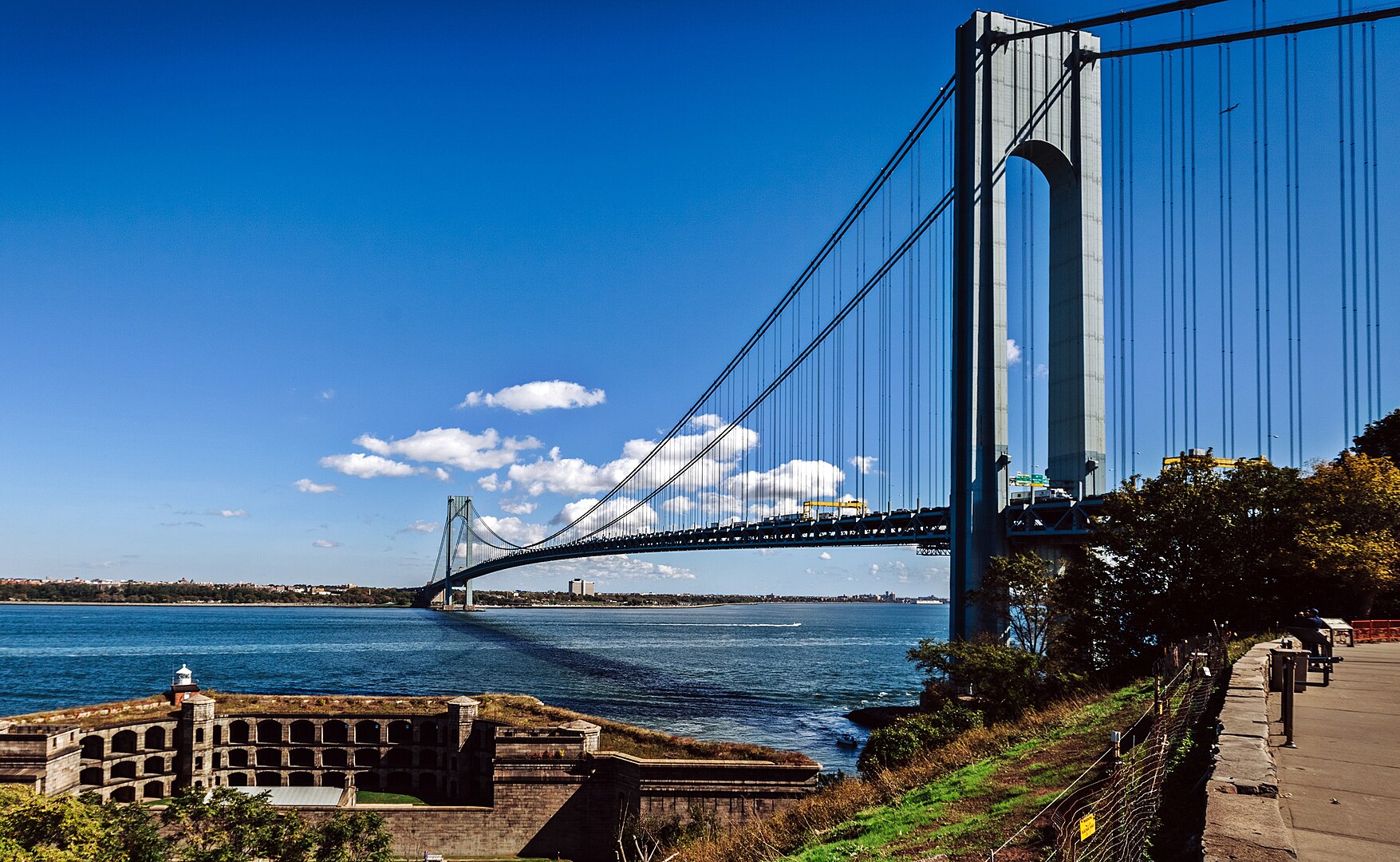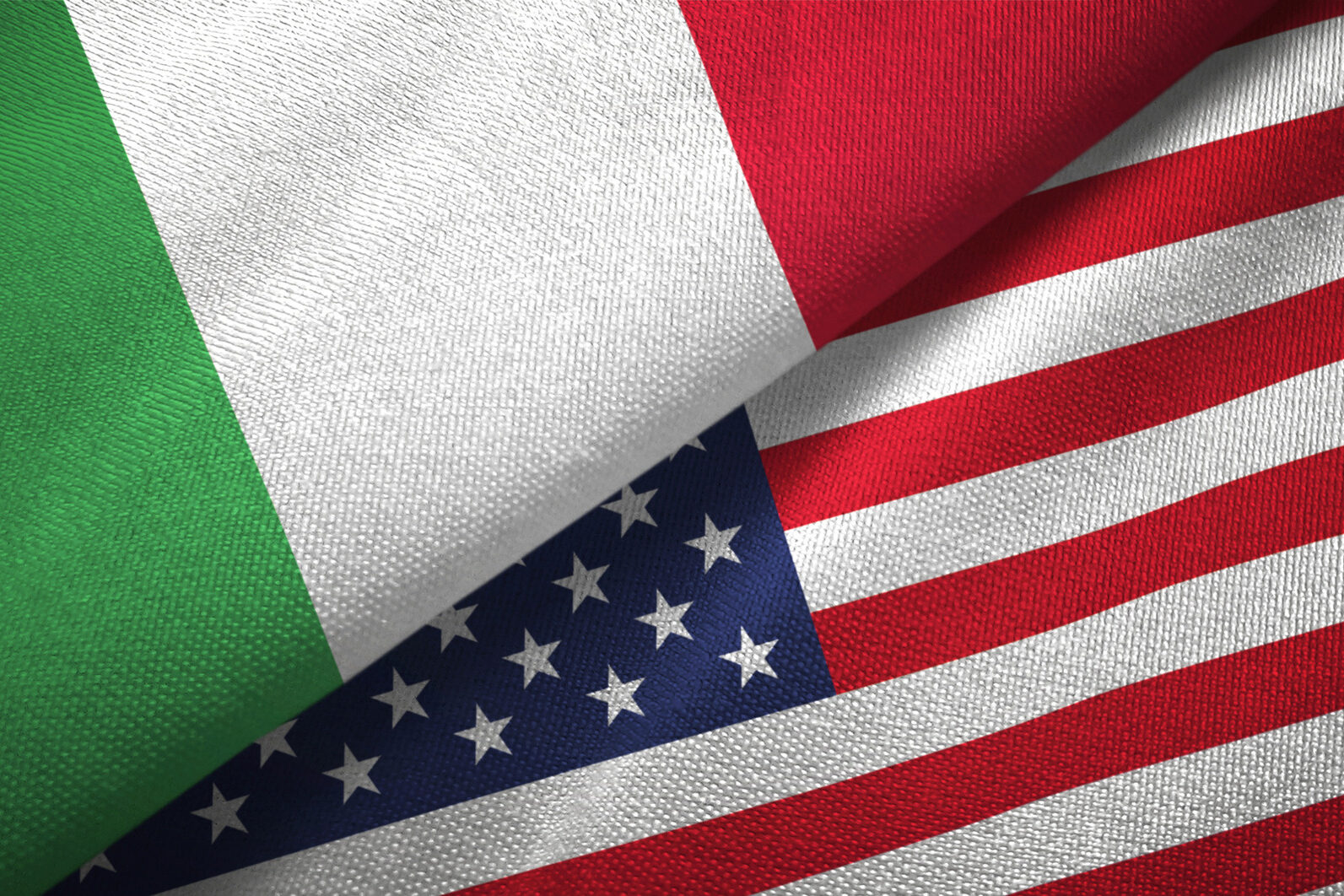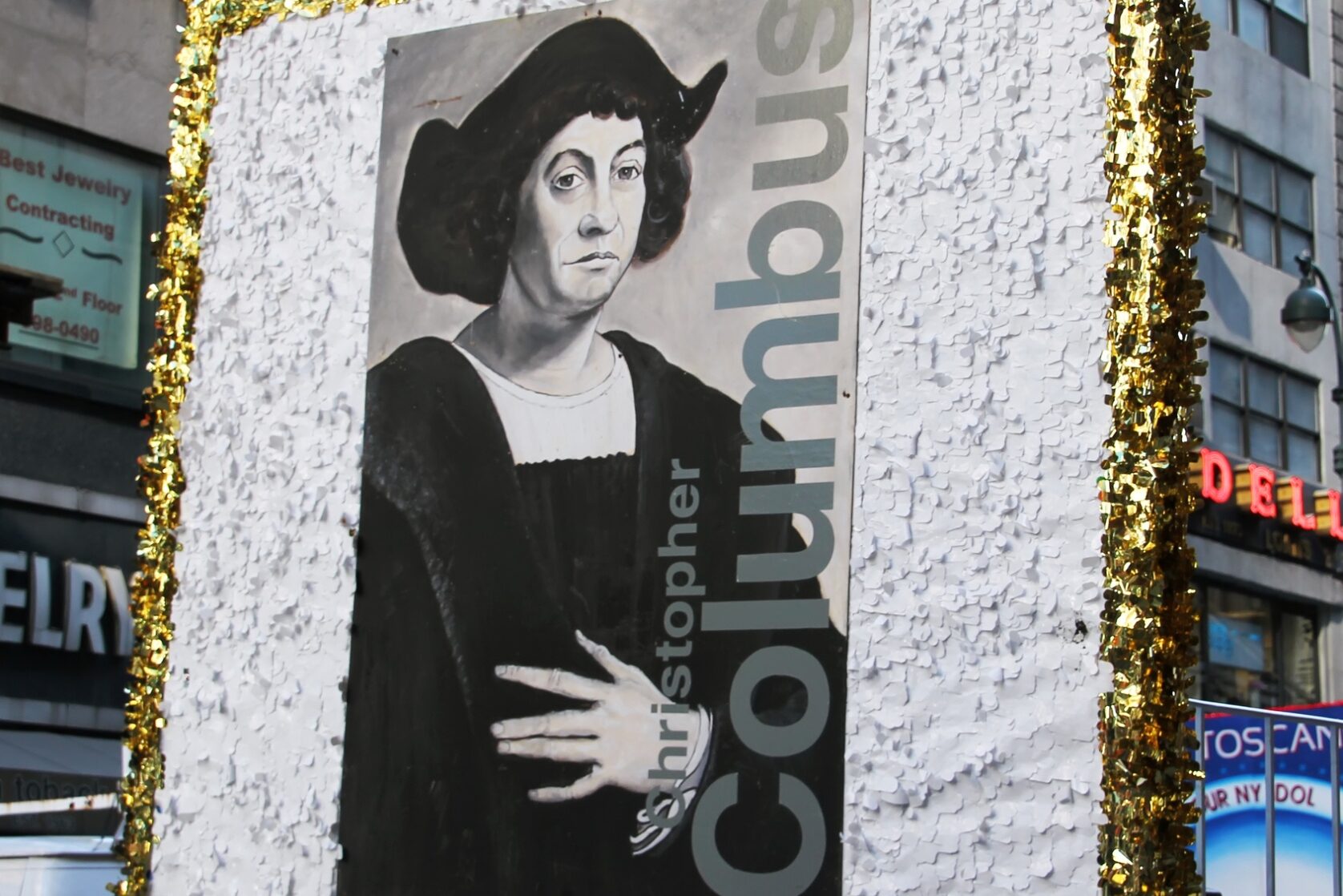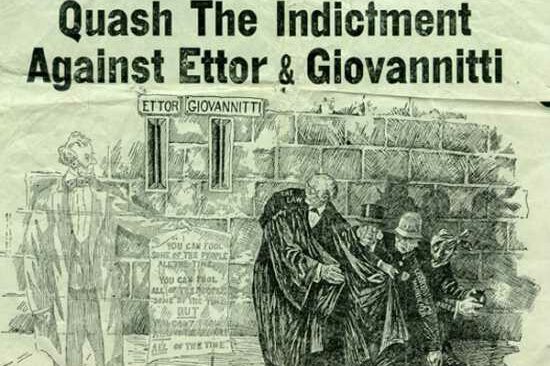Dear Readers,
The Giovanni da Verrazzano‘s namesake’s double-decker suspension bridge, which lost a “Z” in the translation, turned 59 this month. Then-New York Mayor Robert F. Wagner cut the ribbon at the opening ceremony. The upper level of the Verrazzano-Narrows Bridge, which opened to the public on November 21, 1964, was named after Giovanni da Verrazzano (1485-1528), the Florentine explorer of North America at the service of King Francis I of France.
Giovanni da Verrazzano was born in Val di Greve, south of Florence, in the Republic of Florence, and was the son of Piero Andrea di Bernardo da Verrazzano and Fiammetta Cappelli. Verrazzano always considered himself a Florentine, no matter where he traveled. He is renowned as the first European since the Norse expeditions to North America around AD 1000, to explore the Atlantic coast of North America, between Florida and New Brunswick, including New York Bay and Narragansett Bay, in 1524.
Verrazzano left Florence and settled in the port city of Dieppe, France, in 1506, when he began his career as a navigator and left detailed accounts of his voyages to North America. On behalf of merchants and financiers seeking new trade routes, King Francis I of France, in 1523, asked Verrazzano to make plans to explore an area between Florida and Terranova, the Newfoundland, to find a sea route to the Pacific Ocean. Within months, four ships set sail due West for the Grand Banks of Newfoundland, but a violent storm and rough seas caused the loss of two ships. The remaining two damaged ships, La Dauphine and La Normande, were forced to return to Brittany.
Repairs completed, in the final weeks of 1523 they set sail again. This time the ships headed South towards calmer waters, which were however under dangerous Spanish and Portuguese control. After a stop in Madeira, complications forced La Normande back to port, but Verrazzano’s ship, La Dauphine, piloted by Antoine de Conflans, departed and headed once more for the North American continent. It neared the area of Cape Fear on March 1st and, after a short stay, reached the Pamlico Sound Lagoon of modern North Carolina. Exploring the coast further northwards, Verrazzano and his crew came into contact with Native Americans living on the coast. In New York Bay, he observed what he deemed to be a large lake, which was in fact the entrance to the Hudson River. He then sailed along Long Island and entered Narragansett Bay, where he received a delegation of Wampanoag. He stayed there for two weeks, and then moved northwards, following the coast, up to modern Maine, southeastern Nova Scotia, and Newfoundland. After that, he returned to France in July 1524.
Verrazzano named the region he explored Francesca, in honor of the French king, but his brother’s map labels it Nova Gallia, New France.
**
With financial support from Jean Angot and Philippe de Chabot, Verrazzano arranged a second voyage, which departed from Dieppe with four ships early in 1527. One ship was separated from the others in a gale near the Cape Verde Islands, but Verrazzano reached the coast of Brazil with three ships and harvested a cargo of Brazil wood before returning to France. In 1528, during his third voyage to North America, after exploring Florida, the Bahamas, and the Lesser Antilles, Verrazzano anchored out to sea and rowed ashore to the island of Guadaloupe, where he was killed by the native inhabitants. The fleet of two or three ships was anchored out of gunshot range, and no one could respond in time.
**
Verrazzano’s reputation, despite his discoveries, did not proliferate as much as the other explorers of that era. He had the bad luck of making major discoveries within the same five-year period, 1519-1524, of both the dramatic conquest of Mexico and Ferdinand Magellan‘s circumnavigation of the world, which, though Magellan did not complete it, brought him undying fame.
**
The Verrazzano-Narrows Bridge is named for both the Florentine explorer Giovanni da Verrazzano – who, while in the service of Francis I of France, became in 1524 the first European to enter New York Harbor and the Hudson River – and for the body of water it spans, the Narrows. It has a central span of 4,260 feet, 1,298 meters, and was the longest suspension bridge in the world at the time of its complexion in 1964, surpassing the Golden Gate Bridge by 60 feet, until it was in turn surpassed by 366 feet by the Hamber Bridge in the United Kingdom in 1981.
Cari lettori,
Il ponte sospeso e a due piani che porta il nome di Giovanni da Verrazzano, che ha perso una “Z” nella traduzione, ha compiuto questo mese 59 anni. L’allora sindaco di New York Robert F. Wagner ne ha tagliato il nastro durante la cerimonia di inaugurazione. Il livello superiore del Ponte Verrazzano-Narrows, inaugurato al pubblico il 21 novembre 1964, è intitolato a Giovanni da Verrazzano (1485-1528), esploratore fiorentino del Nord America al servizio del re Francesco I di Francia.
Giovanni da Verrazzano nacque in Val di Greve, a sud di Firenze, nella Repubblica di Firenze, ed era figlio di Piero Andrea di Bernardo da Verrazzano e Fiammetta Cappelli. Verrazzano si considerò sempre fiorentino, ovunque viaggiasse. È noto come il primo europeo dopo le spedizioni norvegesi in Nord America intorno al 1000 d.C., ad esplorare la costa atlantica del Nord America, tra la Florida e il New Brunswick, comprese la baia di New York e la baia di Narragansett, nel 1524.
Verrazzano lasciò Firenze e si stabilì nella città portuale di Dieppe, in Francia, nel 1506, dove iniziò la sua carriera di navigatore e lasciò resoconti dettagliati dei suoi viaggi in Nord America. Per conto di mercanti e finanzieri alla ricerca di nuove rotte commerciali, il re Francesco I di Francia, nel 1523, chiese a Verrazzano di progettare l’esplorazione di un’area tra la Florida e Terranova, per trovare una rotta marittima verso l’Oceano Pacifico. Nel giro di pochi mesi, quattro navi salparono verso ovest per i Grand Banks di Terranova, ma una violenta tempesta e il mare agitato causarono la perdita di due navi. Le altre due navi furono danneggiate: La Dauphine e La Normande, furono costrette a tornare in Bretagna.
Completate le riparazioni, nelle ultime settimane del 1523 salparono nuovamente. Questa volta le navi si diressero a sud verso acque più calme, che erano però sotto il pericoloso controllo spagnolo e portoghese. Dopo una sosta a Madeira, complicazioni costrinsero La Normande a rientrare in porto, ma la nave di Verrazzano, La Dauphine, pilotata da Antoine de Conflans, ripartì e si diresse nuovamente verso il continente nordamericano. Si avvicinò all’area di Cape Fear il 1 marzo e, dopo un breve soggiorno, raggiunse la laguna di Pamlico Sound, nella moderna Carolina del Nord. Esplorando la costa più a nord, Verrazzano e il suo equipaggio entrarono in contatto con i nativi americani che vivevano sulla costa. Nella baia di New York, osservò quello che riteneva essere un grande lago e che in realtà era l’ingresso del fiume Hudson. Poi navigò lungo Long Island ed entrò nella baia di Narragansett, dove ricevette una delegazione di Wampanoag. Rimase lì per due settimane, quindi si spostò verso nord, seguendo la costa, fino al moderno Maine, alla Nuova Scozia sud-orientale e a Terranova. Successivamente ritornò in Francia nel luglio 1524.
Verrazzano chiamò la regione che esplorò Francesca, in onore del re francese, ma la mappa di suo fratello la etichettò Nova Gallia, Nuova Francia.
**
Con il sostegno finanziario di Jean Angot e Philippe de Chabot, Verrazzano organizzò un secondo viaggio, che partì da Dieppe con quattro navi all’inizio del 1527. Una nave fu separata dalle altre da una tempesta vicino alle Isole di Capo Verde, ma Verrazzano raggiunse la costa del Brasile con tre navi e raccolse un carico di legname brasiliano prima di tornare in Francia. Nel 1528, durante il suo terzo viaggio in Nord America, dopo aver esplorato la Florida, le Bahamas e le Piccole Antille, Verrazzano gettò l’ancora in mare e remò a riva fino all’isola di Guadalupa, dove fu ucciso dagli abitanti nativi. La flotta di due o tre navi era ancorata lontana dalla portata dei colpi di arma da fuoco e nessuno potè rispondere in tempo.
**
La fama di Verrazzano, nonostante le sue scoperte, non proliferò tanto quanto quella degli altri esploratori dell’epoca. Ebbe la sfortuna di fare importanti scoperte nello stesso lasso di tempo, cinque anni dal 1519 al 1524, sia della drammatica conquista del Messico che della circumnavigazione del mondo da parte di Ferdinando Magellano, che, sebbene questi non la completò, gli valse una fama immortale.
**
Il Verrazzano-Narrows Bridge prende il nome sia dall’esploratore fiorentino Giovanni da Verrazzano – che, mentre era al servizio di Francesco I di Francia, divenne nel 1524 il primo europeo ad entrare nel porto di New York e nel fiume Hudson – sia per lo specchio d’acqua che crea i Narrows. Ha una campata centrale di 4.260 piedi, 1.298 metri, ed era il ponte sospeso più lungo del mondo al momento della sua realizzazione nel 1964, superando il Golden Gate Bridge di 60 piedi, finché non fu a sua volta superato di 366 piedi dal ponte Hamber Bridge nel Regno Unito nel 1981.
**































